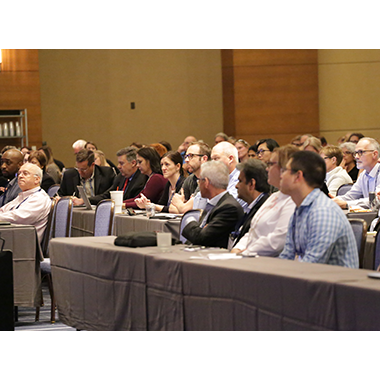Each year, 200,000 people in the U.S. require emergency medical care due to allergic reactions to food. Common foods that trigger allergic reactions include certain types of seafood, dairy, nuts, wheat, soy and sesame. For some, food allergy reactions can be serious and even life-threatening, requiring immediate treatment via the drug epinephrine.
Allergens are also one of the leading causes of food recalls globally. As food allergies continue to impact individuals and families across the nation, food manufacturers and distributors must be vigilant when manufacturing, packaging and selling foods to consumers.
Understanding Allergen Regulations
Many countries aim to protect individuals with food allergies by enforcing government regulations. Such regulations can require product manufacturers to disclose ingredients in packaged food and beverages.
In the U.S., the FDA recognizes nine major food allergens: crustacean shellfish, eggs, fish, milk, peanuts, tree nuts, sesame, soybeans and wheat. Sesame is the newest recognized allergen and was added in 2022 as part of the Food Allergy Safety, Treatment, Education and Research (FASTER) Act. These allergens must be identified on labels for American food products.
Similarly, in Canada, the Canadian Food Inspection Agency (CFIA) has a list of 11 priority allergens, which includes eggs, milk, mustard, peanuts, crustaceans and mollusks, fish, sesame, soy, sulfites, tree nuts, wheat and triticale, which must be disclosed on pre-packaged foods sold in the country.
In both countries, products may be recalled due to improper labeling and announced via public notice. (A comprehensive list of recognized food allergens by country can be found on the Food Allergy Research and Resource Program (FARRP)’s website.)
Activating Your Allergen Management Program
A comprehensive and effective allergen management program protects your consumers and your company and is necessary to meet regulatory and GFSI (Global Food Safety Initiative)–benchmarked standard requirements. Creating an allergen management program involves developing processes and protocols and training employees to follow them.
Allergen cross-contact can occur when an allergenic food or ingredient is unintentionally incorporated into a food product. Food manufacturers and distributors should have a program that includes an allergen risk assessment, which helps to identify and manage any unintentional allergen contamination throughout the supply chain while tracing them throughout the facility. Good Manufacturing Protocols (GMP) should be followed for personal hygiene, handwashing, sanitation programs and more.
Managing Your Suppliers
Supplier communication is key to identifying allergens in raw materials. Use current supplier specifications and ingredient statements to identify allergens coming into the facility. Be alert for “may contain” statements and review your supplier’s allergen control policies and procedures.
In today’s food production environment, there are more supply chain disruptions than ever before. If there is a change in your raw materials or supplier, make sure that all documentation and finished product labels are updated.
Additional best practices when working with suppliers include:
- Have a policy in place for label changes, noting that if a label from a product you purchase from a supplier changes, you must be notified of the change prior to the change being made and put into effect.
- Ask for updated specifications/allergen information from suppliers on an annual basis. This could help to quickly identify issues if the supplier neglected to inform you of a change.
By identifying and listing sources in the facility, you can detect any ingredients and processing aids that contain or may contain allergens due to cross-contact or carry-over products. It is also important to prepare a master list of all ingredients in the facility and consider both primary and secondary ingredients, such as spices, colors and flavors.
Ask questions along the production process, identifying potential risks in recipes/formulas, traffic flow (of people, materials, and waste), potential crossovers of conveyors or pipe systems, shared equipment, storage practices, material segregation and airflow.
Avoiding Allergen Cross-Contact
Ensure that raw materials are labeled and segregated with incoming ingredient specification checks by weighing powders containing unique allergens in a separate and labeled area, covering totes or containers containing allergenic ingredients during transfer, and controlling the ventilation over lines where protein powders are dumped. Use product scheduling to maintain proper segregation.
Designate dedicated equipment, including utensils, if possible, as well as production sequencing or cleaning between allergen changeovers. Refrain from using original ingredient containers that previously held allergens. At the end of an allergen production run, conduct a complete and validated allergen clean.
Use documented visual inspection on each piece of equipment and environment between allergen changeovers and conduct regular labeling checks against the approved label/package design for each item produced. A third-party partner can be used to help develop and maintain supplier specifications, audit formulations, and review current packaging.
Protecting Consumers and Business Reputation
While ensuring products are free of any undeclared allergens may seem more challenging than ever before, establishing the right programs and practices can keep both your business and consumers healthy and safe. Implementing an allergen management plan, supplier checks, and allergen controls is key to avoiding cross-contact in the production process and throughout the supply chain, ensuing fewer disruptions in the manufacturing process, and ultimately, building trust with consumers.





















